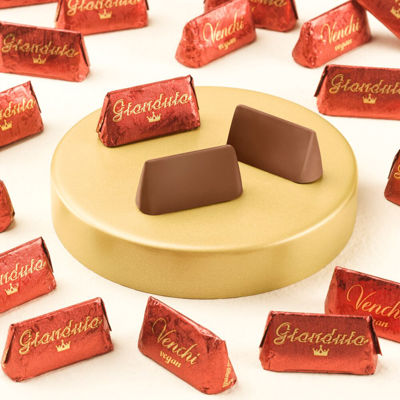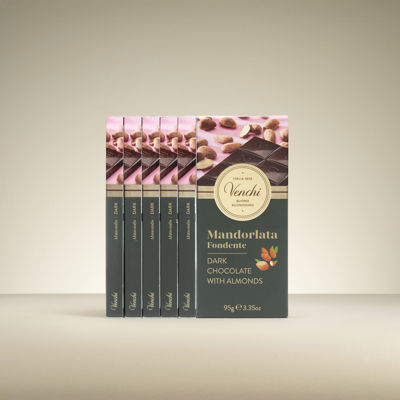
How Much Caffeine In Chocolate
Delicious, indulgent, and mood-boosting, chocolate is a super-popular delicacy. While nibbling on chocolate is a fun experience, where do the stress relief and energy spike come from?
Does chocolate have caffeine? Yes, a small amount. But it's not a one-size fits all answer. The caffeine amount depends on the type of chocolate and the origin of the cacao beans. The general rule is the darker the chocolate, the more caffeine.
But have you noticed when eating chocolate, you never experience any of the negatives of a caffeine boost, only the positives? It's because of a magical ingredient in chocolate called theobromine that helps to counteract side effects.
Caffeine Amount By Chocolate Type
How much caffeine is in chocolate depends on whether it's dark, milk, or white. The different types have different ingredient ratios that impact the caffeine amount.
Chocolate is made by roasting, de-shelling, grounding, and heating the cacao beans. After the heating, what results is cocoa solids and cocoa butter. Caffeine is found only in cocoa solids. So to determine how much caffeine is in the chocolate, look at the percentage of cocoa solids.
Does Dark Chocolate Have Caffeine?
Yes, dark chocolate does contain caffeine. Of all the chocolate varieties, it's the one with the highest amount. It's because the darker types are made of more cocoa solids, and the caffeine is in the cacao. But that doesn't mean you have to give up this heavenly sweet. The amount is still relatively small. For comparison, the caffeine in a serving of dark chocolate is about four times less than a standard cup of coffee.
If you're particularly sensitive to caffeine, try to enjoy a few blocks of your favorite dark chocolate during the day rather than in the evening. Plus, in moderation, benefits of dark chocolate are a lot: for example, it’s known to be beneficial for heart health and bursting with antioxidants and minerals.
As mentioned, caffeine amounts can vary depending on the origin of the cacao beans. But here's an average from the USDA of the caffeine amounts per 1 ounce of chocolate:
Dark chocolate with 70-85% cacao = 22.7 mg
Dark chocolate with 45-60% cacao = 12.2 mg
Does Milk Chocolate Have Caffeine?
Does milk chocolate have caffeine? Yes, a tiny amount but less than dark chocolate. Look at the color of the chocolate. The darker it is, the more cocoa and so more caffeine.
The delicately creamy taste of milk chocolate comes from a blend of cocoa and milk powder. The milk lessens the percentage of cocoa and creates a sweet treat very low in caffeine, that's many people's favorite.
From the USDA, the caffeine amount per 1 ounce:
Milk chocolate = 5.6 mg
Does White Chocolate Have Caffeine?
Does white chocolate have caffeine? No, it has 0 mg of caffeine. That's because it has slightly different ingredients from other chocolates.
Top-quality varieties are usually made from cocoa butter, milk powder, sugar, and vanilla. Cocoa butter is the part of the cacoa bean that doesn't contain any traces of caffeine. That's the good news, the super-indulgent creamy taste of white chocolate that many love can be enjoyed at all hours of the day.
Caffeine Amount By Country
It might come as a surprise, but where the cacao beans are grown greatly impacts the caffeine levels. It may be because weather, soil, and altitude can influence the composition of the beans. So why not caffeine too?
These findings are from an extensive study that included 200 cacao samples from 26 different countries. Here are some general conclusions:
Cacao grown in the Caribbean and South America usually has significantly more caffeine than cacao from Africa.
The highest caffeine levels are in cacao from Ecuador, Venezuela, and Peru.
The lowest caffeine levels are in cacao from Ghana, Ivory Coast, and Mexico.
The country of origin of the cacao makes a big difference in the caffeine amount. Here are some examples to illustrate this:
75% cacao dark chocolate from Ecuador = 42mg per 1 oz
75% cacao dark chocolate from Peru = 41 mg per 1 oz
75% cacao dark chocolate from Mexico = 18 mg per 1 oz
Another interesting fact is that the roasting process doesn't affect the amount of caffeine in the beans or the chocolate, and the same for coffee.
Chocolate Caffeine Amount vs. Other Products
We've had a look at the very low caffeine levels of chocolate. But how do they compare to other popular caffeinated drinks? Let's find out.
Caffeine in Chocolate vs. Coffee
Chocolate and coffee, the perfect pair? For both, beans are roasted, then ground up to create a bar or cup of deliciousness. As with chocolate, caffeine levels in coffee can vary greatly. In general, a shot of espresso contains 64 mg of caffeine, but for those that love a double-shot latte or Grande brews from Starbucks, the numbers are much higher.
The best part? Continue to indulge in your favorite sweet treat and hot brew, all on the same day. Together, an average serving of chocolate and coffee is well below the recommended daily caffeine intake, roughly 400 mg. So nothing needs to come between you and your beloved chocolate and coffee.
How Much Caffeine In Hot Chocolate?
Rich, comforting, and extravagant hot chocolate is unbeatable when the chilly weather starts.
But we're here to clear up a question that many of us ask. How much caffeine is in hot chocolate? Luckily, very little.
On average, hot chocolate contains around 5 mg of caffeine. But, it can vary. Richer versions can go up to 25 mg. Snuggle up next to a fire with a cup of deliciously frothy hot chocolate. Enjoy the night and the sweet drink with no worries of disrupted sleep.


